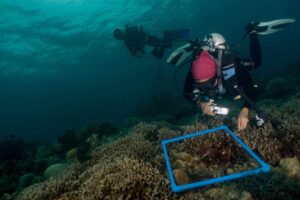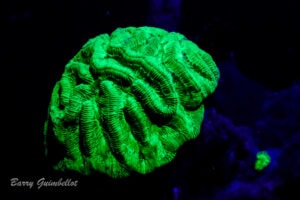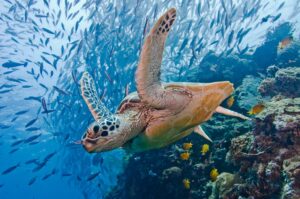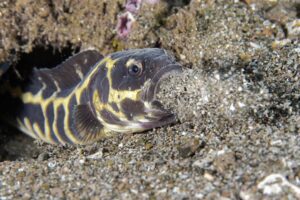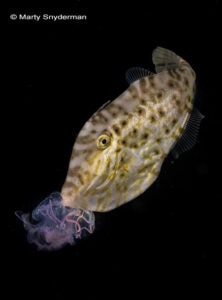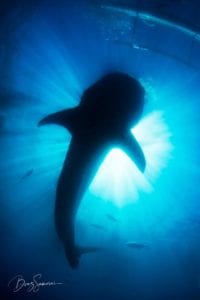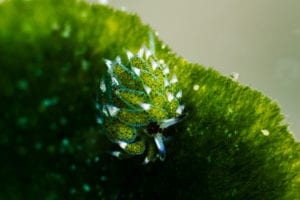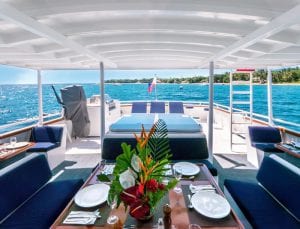By Marty Snyderman
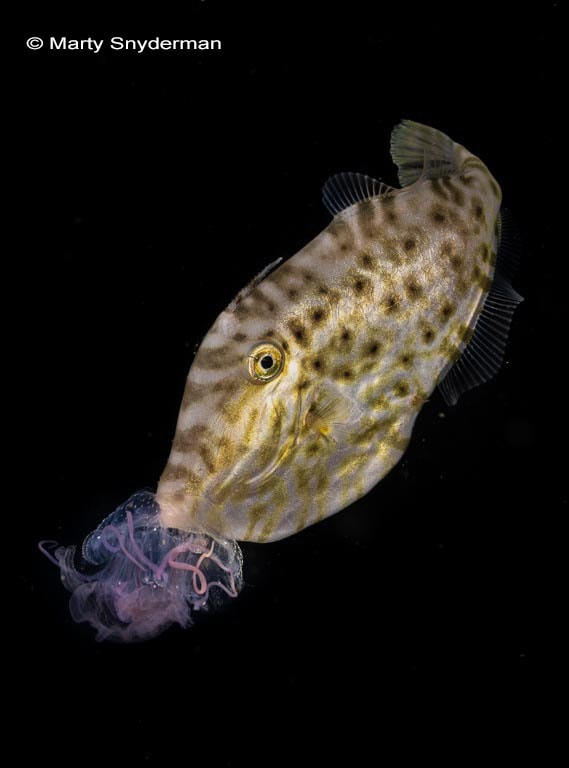
Larval filefish feeding on a sea jelly as seen on a blackwater dive in Puerto Galera
If asked to name the greatest migrations on Earth, many people would surely say the that it is the annual journey taken by caribou. Others would likely list the trek taken by wildebeest or Arctic terns. Certainly, these migrations are noteworthy in terms of the distances traveled. But the greatest migration on Earth happens not on land or in the air, but in the oceans. Known as diel vertical migration, on a nightly basis trillions of marine animals (an estimated 10 billion tons), make the trek from the depths far below sport diving limits to the surface (or just below it). Many of these migrating creatures are forms of flea-sized zooplankton that attract an array of predators that range from larval fishes, salps, krill, and copepods to squids.
To our guests in both Puerto Galera and Dumaguete, the nightly ascent translates into a new diving adventure known as blackwater diving. Here’s how it works: Following a detailed afternoon briefing, participating divers head to sea on a short boat ride so the crew can deploy a brightly lit surface float and array of powerful submerged lights just before sunset. The lights attract the creatures that rise from the depths. After giving the lights time to draw in marine life, divers and dive guides enter the water to see what marvels from the deep can be seen and photographed.
While you never know what animals might be encountered on a given night, some commonly encountered creatures include larval jacks, filefishes, seahorses, moray eels, octopuses, mantis shrimps, sea jellies with accompanying fishes, shrimps and crabs, comb jellies, larval lobsters, chambered nautiluses, pyrosomes, squids, and more. Some larval creatures look like miniature adults, while others are bizarre looking and seem to bear little, if any, resemblance to their parents. If fate is kind, some of these creatures will soon settle to the sea floor to live the rest of their lives. Others will remain in the water column, while still others will be preyed upon.
Placed at the surface and at depths of 10, 20, 30, and 40 feet below, the lights on the array
are attached to a weighted downline. Guests and guides adrift underwater with the array.
Maintaining a safe distance, the boat moves with the lights and divers, while the night
reveals aspects of life in the sea that only a very small percentage of divers have ever seen.
Thrilling and educational, our blackwater dives are addictive. Go once and you are highly
likely to want to go again and again to bear witness to the greatest migration on Earth.


